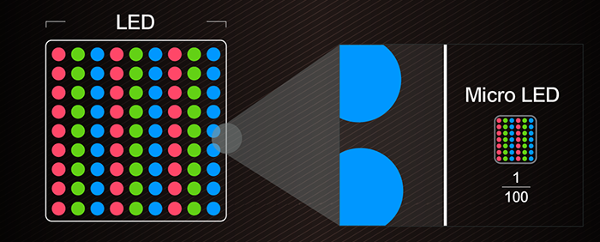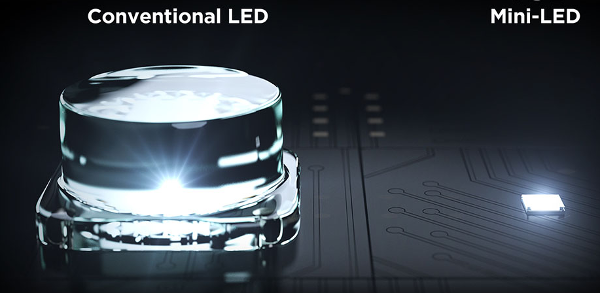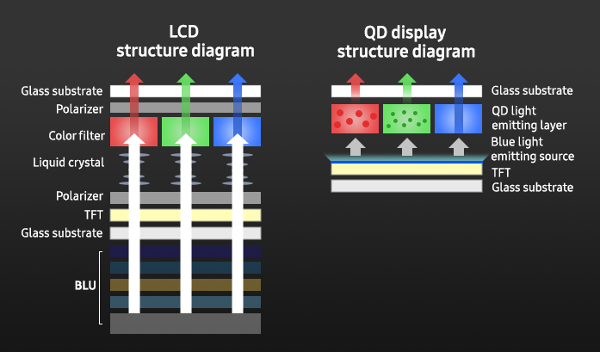Which of the New TV Technologies Will Prevail?

15 Minutes with Robert (Bob) O’Brien, Co-Founder, Display Supply Chain Consultants (DSCC)
Advances in TV technology are coming fast and from many directions these days, giving consumers — and home theater enthusiasts, in particular — more reasons than ever to consider upgrading to a new set. Whether we’re talking Mini-LED, MicroLED, or QD-OLED, a new take on OLED technology, there’s a lot to keep up with. We tracked down industry insider Robert (Bob) O’Brien to get his take on what has become a very dynamic space. As co-founder and principal analyst of Display Supply Chain Consultants (DSCC), O’Brien specializes in display materials and covers developments in TV and other large-screen display applications. He has worked in the display industry since the 1980s and held positions at Philips Display Components and, more recently, Corning Glass Technologies, where he spent 11 years as director of market intelligence and strategy.
 S&V: Two similar sounding yet very different technologies are getting a lot of attention: Mini-LED and MicroLED. I’d like to get your take on each, starting with MicroLED, which Samsung called the “pinnacle of display technology” in a CES press release announcing 2022 models in 89-, 101-, and 110-inch screen sizes. Also, what impact do you see MicroLED having on the well-established OLED TV market, which itself is undergoing advancements such as LG’s new evo panel, which is brighter than the best of its previous panels?
S&V: Two similar sounding yet very different technologies are getting a lot of attention: Mini-LED and MicroLED. I’d like to get your take on each, starting with MicroLED, which Samsung called the “pinnacle of display technology” in a CES press release announcing 2022 models in 89-, 101-, and 110-inch screen sizes. Also, what impact do you see MicroLED having on the well-established OLED TV market, which itself is undergoing advancements such as LG’s new evo panel, which is brighter than the best of its previous panels?
Bob O’Brien: Yes, both of those technologies are exciting developments in the TV display space. It's helpful to start with some definitions. Generally speaking, Mini-LED is used to describe a backlight technology for LCD displays that uses smaller “mini LEDs” to achieve a more precise backlight, which greatly improves contrast and can have other benefits. MicroLED is a term used for a direct-view technology — in a MicroLED display, you are looking at millions of individual LED elements that form the picture. Frankly, I see MicroLED in a category all by itself. I have seen many MicroLED displays at trade shows like CES, and it is without question the display technology that offers the best picture quality performance. The problem with MicroLED is cost.
The MicroLED TVs Samsung announced at CES will generally run north of $100,000; I have heard that the target price in 2022 for the smallest such TV is "only" $80,000 — well more than 10 times the price of premium OLED TVs. A lot of companies are working on bringing costs down but the chasm between MicroLED and OLED is vast and will take a long time to cross. Let’s consider some math: a 20% cost reduction every year for 10 years accumulates to a 10x reduction in cost. That's what MicoLED needs to play in the same ballpark as OLED, and that suggests to me that MicroLED will be a terrific display technology for the 2030s.

S&V: Let’s look at Mini-LED — what are the pros and cons and what role do you see it playing in the broader market, now and in the future?
O’Brien: When compared with a conventional LED-backlit LCD, Mini-LEDs enable a much more precise backlight because there are many more LEDs arranged in a matrix and driven independently. This allows LEDs to be turned off in darker parts of the picture, which in turn greatly improves black level.
Being able to control individual LEDs in the backlight can also allow for better energy efficiency because you are only lighting up the portions of the screen that are bright. Even so, in higher end TVs, brands often trade improved efficiency for higher brightness because Mini-LED TVs can typically achieve higher peak brightness than OLED TVs. Finally, when combined with Quantum Dot Enhancement Films (QDEFs), Mini-LEDs can offer superior color compared to existing OLED TVs, which use White OLED (WOLED) panels.
Mini-LED backlighting can be offered in a range of performance levels with the main variable being the number of LEDs, which can range from under 1,000 to over 10,000. More LEDs — or to be precise more "zones" of control — means a better picture but of course adds cost. At the lower end of the price spectrum, LCD TVs with a Mini-LED backlight can be sold at a modest premium over conventional LED-backlit LCD TVs but the cost is equivalent to OLED in high-end models.

S&V: Sony made a splash at CES with its new QD-OLED (a.k.a. QD) models, featuring improved color and a notable increase in brightness compared with current OLED models. Interestingly, the display panels used in these TVs are made by Samsung. How significant of an advancement is QD in your estimation?
O’Brien: This is a big deal — the biggest innovation in display technology since OLED panels first arrived about ten years ago. I saw these TVs at a Samsung Display (SDC) private demo and I was greatly impressed. And early reviews of Sony’s TVs and Dell Alienware monitors using this technology have been effusive in their praise. According to Samsung Display, which supplies panels to Samsung Electronics, QD-OLED panels have advantages in peak brightness, color volume, and viewing angle, among other benefits.
While I could see these benefits in the demo, only one of them was substantial and clearly apparent in a side-by-side demo. QD-OLED’s ability to deliver greatly enhanced color performance and peak brightness on individual colors far outperforms WOLED TV panels. Frankly, I don’t see any parameter where WOLED outperforms QD-OLED. The advantage in color will enable SDC to credibly claim that it has the best flat panel for TV.

S&V: What’s your take on Samsung’s soft announcement that they will ship two QD-OLED models in April? The announcement was weird because in the official press release Samsung issued last week (see our news report here) there was no mention of QD-OLED. Rather, the last paragraph of the release noted that the S95B “OLED” TV is available for pre-order in 55- and 65-inch screen sizes at respective prices of $2,200 and $3,000.
O’Brien: At CES 2022, Sony was the first to announce QD-OLED TVs in 55- and 65-inch screen sizes, both with 4K resolution. A week ago Samsung announced TVs with similar specs with availability in April. I have heard that price negotiations between the two divisions of Samsung (displays and TVs) held up the Samsung launch. I agree that the Samsung announcement was weird; it suggests that the conflict between the two divisions was not resolved amicably.
Samsung’s TV division is in an awkward spot because for six years or more they’ve been telling consumers not to buy OLED. In recent years, the company has focused on marketing 8K and big sizes (greater than 75 inches), and the QD-OLED TVs are neither. So, these new QD-OLED models fit awkwardly in Samsung’s TV product portfolio and marketing campaign. Judging from the press release, the TV division may have been “forced” by Samsung’s executive officers to bring the QD-OLED to market.
The main problem with QD-OLED is going to be cost. This is an exceptionally challenging product to make. Samsung Display is introducing several world’s first technologies in these displays. Even when the yields improve, it will still be a very expensive technology to produce — not MicroLED expensive, but more expensive than WOLED.
QD-OLED is still early in the mass production phase and yields are low, making it even more expensive. On top of that, Samsung has limited capacity to make QD-OLED displays. Running at full current capacity with [an unrealistic] 100% yield, Samsung could make about 1.8 million TVs so they will probably produce fewer than 1 million QD panels in 2022. And new capacity will not arrive before 2025. That means the product line will probably be limited to 55- and 65-inch 4K TVs — and the price is likely to remain high.





























































